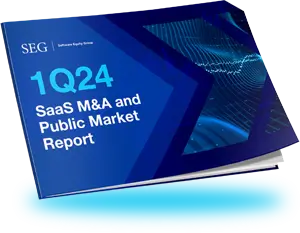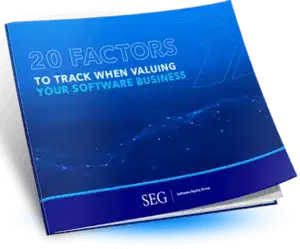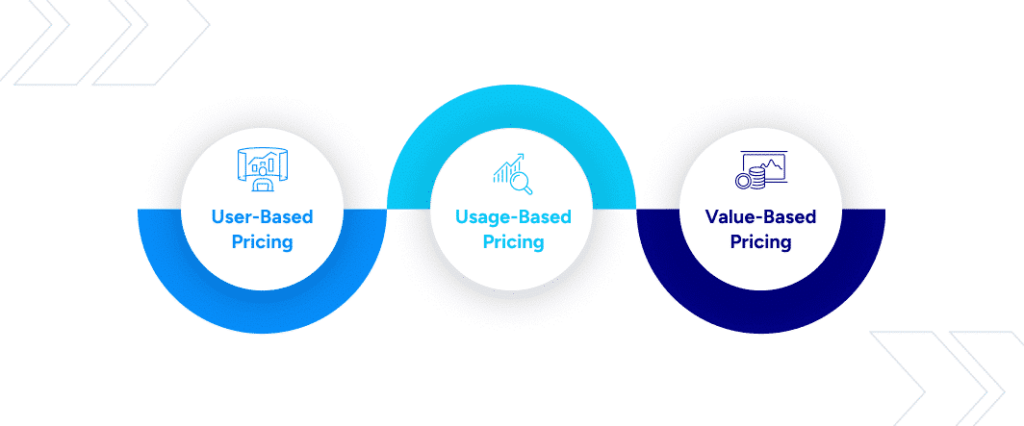Why the Most Successful Exits Are All About the Journey

How to Achieve a Successful Strategic Exit
“It is good to have an end to journey toward, but it is the journey that matters in the end.” – Ernest Hemingway.
Watch SEG’s Managing Partner, Allen Cinzori, present his thoughts about the journey to a successful strategic exit: Tips to Achieving a Strategic M&A Exit.
What is a ‘Successful’ Exit?
While most software CEOs and founders are familiar with building and scaling great companies, few stop to think about the journey as it relates to achieving a ‘successful’ strategic exit.
Surprisingly enough, CEOs spend endless amounts of time on building the business and focusing on the tactical and they often forget to look at the strategic aspects of the business. Stop and think about what you are doing to build value, what you are doing to build relationships with buyers, and how you are planning for a strategic exit.
What even is a successful strategic exit? It is more than simply maximizing value for your business. While this may be the primary goal for software companies, CEOs and founders should also focus on building value for their customers, differentiating themselves, and de-risking.
Most CEOs want an exit, but not everybody. Ask yourself what your business objectives are. Do you want to exit to a strategic buyer, bring in private equity capital, sell 60% and keep 40%, file for a public offering? The options are endless…
At the end of the day, there is a path. That path starts with a plan. To begin your journey down the path, make sure you have the right vehicle for the journey, monitor performance, maximize differentiation, pay attention to the signs, and time the exit to maximize value.
At the end of the day, selling a company is a lot more than waking up one day and deciding to sell, while expecting the process to work itself out. The process begins years, or even decades, before an exit occurs. Take the time to enjoy the journey.
The Importance of Mapping Your Journey
Achieving the exit of your dreams depends on getting the basics right. As such, you should consider the following questions to map your journey:
- What are you building?
- What market pain are you addressing, and what is the “medicine” to cure it?
- How will you serve the market, attract customers, and differentiate?
- How will you position against competition? Is it sustainable? Scalable?
- What is your total addressable market (TAM), and how will it change, how fast/slow will the market adopt?
- What set of strategic buyers are you targeting and how will you build relationships?
The answers to these questions will help to give some clarity on the direction that you and your team need to take. By focusing on addressing market pains, you will differentiate your company and create a product desirable to strategic buyers.
Know Your Market
You’ve started building out your road-map by focusing on building value for your customers. However, there is always a risk of missing the market, and defining your market is critical to a successful exit.
As such, you need to make sure to constantly realign your plans to the drivers which define your market. This includes understanding your TAM (Total Addressable Market) – is it ocean-sized (i.e. >$750M) or is it lake-sized (i.e. from $250M – $750M). Everyone talks about the ocean-sized market, since this is where the 50x multiples, high-risk / high-return deals occur. But think about the ocean…it is filled with sharks, all kinds of scary creatures, and rouge waves. If you’re going after the ocean-sized market, be prepared.
On the other side, you have a lake-sized market. There is lower risk and low return, less competition, and solid multiples. In the lake, there are fewer failures and you likely have more time to grow and less need for outside capital.
The vast majority of software companies would be better off focusing on the lake-sized market. Strive to be the best at what you do, and use that to differentiate.
Measuring Your Performance: The Dashboard
Driving your company, in a lot of ways, is the same as driving your car. Think about the dashboard of your car. If you have no dials, you are driving absolutely blind. With data comes power to make quality decisions. Without data, you are driving blind. The majority of software companies significantly lack the necessary insight, yet the foundation of success is understanding the performance of your company.
The dashboard of our car tells us a number of performance metrics – how fast the car is moving, how much gas we have left, etc… Imagine driving a car at a high RPM, almost red-lining. The engine is running hot and is going to blow up if you continue at that rate. By looking at the data on the dash, you know you need to slow down a bit, add a higher gear in the car, and get back on the road.
We see similar parallels in software companies. Often times companies go to market, have a lot of success, and grow quickly. They often begin to experience a strain on their services as the company implements solutions, yet they keep going down the road. If you keep going, you will run into problems such as upset customers and retention issues.
Instead, by evaluating your data, you can see that it is better to slow down a bit, invest in your services, and get back on the road to grow. Evaluating software KPIs (key performance indicators) are essential to success.
Some suggested KPIs include:
- Monthly and Annual Recurring Revenue
- Churn Rates
- Unit Economics – payback periods, marginal benefits/cost, gross profit margin, LTV, CAC
- Existing Customer Base – is it growing or shrinking and why?
Evaluating essential KPIs will help to determine if your vehicle is on the path to success.
Segment to Differentiate
KPIs are very useful for demonstrating what makes a given organization unique, but these are really just the tip of the iceberg. Don’t forget to look out the window of your car. Take a deeper look into your surroundings, past the KPIs. Your car may be traveling at a comfortable 65mph with a full tank of gas, but you may realize you are driving on a race track with cars passing at 100mph.
In this case, segmenting your business can make it much easier to find specific points of differentiation. Segment your business by customer type, verticals, and categories…then run the KPIs to uncover specific dynamics of a market.In addition to segmenting the business, segment your metrics. Measure and compare metrics to different vertical markets, market segments, direct vs. indirect competitors, etc.. When a business focuses its efforts where they are proven to be most useful, the business will be able to enjoy the benefits of adding real long-term value.
It is also important to remember that a company’s intrinsic value is directly tied to external variables. The best valuation models will not only include the internal variables mentioned above, but they will also include all relevant data points that are derived from the outside world.
Exit Timing
How do you time an exit? Executives and owners often think they have control of the timing of their exit. This is simply not the case. The markets and competition are constantly evolving and consolidating, and it is important to plan accordingly. In the lower market, products and customer momentum drive valuation. Buyers are looking for a great product that is differentiated in the market, and for that matter, it is important to be the best at what you do.
At the end of the day, markets tend to be unpredictable and as such you need to think of your business like a rare piece of real estate. You could sell it at any time, but it takes a special buyer to maximize value. However, these buyers don’t come along every day, and often, only once in a business’ lifetime. In addition, it is important to keep in mind that a strategic buyer’s demand may be a limited window in time.
Does this mean you need to resign yourself to the irrationality of the markets? The answer is no.
Achieving to a successful exit is a journey which begins with building value for your customers and differentiating yourself from the competition. Doing so will help to position your team for a successful exit. Listen carefully to the markets and plant the seeds like any pre-sale process. By taking these steps, your company will be prime for a successful exit when the timing is right.
Contact our team to find out how SEG has helped software companies like yours through successful exits.
Watch SEG’s Managing Partner, Allen Cinzori, present his thoughts about the journey to a successful strategic exit: Tips to Achieving a Strategic M&A Exit.











